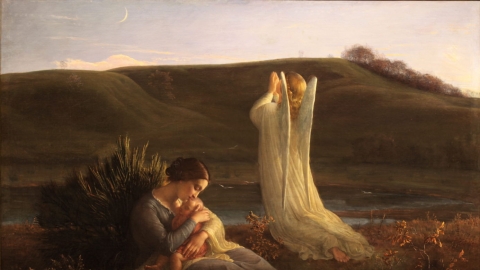Synod on Synodality: A Predicted Disaster

Presentation of the summary synodal text at the Madrid Assembly
The diocesan phase of the Synod on Synodality in Spain ended on June 11, 2022 with a final Synodal Assembly of the Spanish Episcopal Conference taking place in Madrid, and with the official closing of the synodal phase. A number of lay synod members participated in this last assembly.
The Assembly presented the final synthesis of the documents gathered during the diocesan phase. From the opening of the Synod, October 10, 2021, until its closing in Spain on June 11, 2022, all Spanish dioceses, religious congregations, secular and contemplative life institutes, apostolic movements, and many other apostolic institutions were involved.
In Spain, 14,000 synodal groups took part in this common journey, involving more than 215,000 people, mostly lay, but also consecrated persons, religious, priests, and bishops.
All 70 dioceses were involved, with 13,500 parish groups, numerous religious congregations and 11 regional CONFERs, 215 cloistered monasteries, 20 diocesan Caritas, 37 lay movements and associations, and 21 secular institutes. The document specifies:
“The appeal by Pope Francis to participate in the Synod was accepted with enthusiasm and hope, and it was understood that the purpose of this diocesan phase was not to answer a questionnaire, but to begin to incorporate synodality as a fundamental part of the being of the Church and the ‘synodal style’ derived from it as the appropriate way to do Church.”
“We find that the liturgy is lived in a cold, passive, ritualized, monotonous, and distant manner. This is largely due to a lack of formation about its content, which leads to a misunderstanding of what it is and what it means, and a lack of participation in its development, which leads to indifference.”
To the reader who was not born yesterday, the resemblance is obvious: these are the same reproaches that were addressed to the Tridentine Mass in order to be able to replace it with an enthusiastic, joyful, active celebration... more than 50 years ago. What a confession! The document continues:
“This is why it is essential to strengthen liturgical formation and promote lively and fruitful participation through the creation of liturgical animation teams. It is also necessary to think seriously about the adaptation of languages, vestments, and certain rites more distant from the present time,” –all things inscribed in the Council for almost 60 years.
The document continues with the main themes addressed: “listening,” which covers the reception of people who need support – in particular divorced-remarried people or LGBT people. The need for a formation: the document recognizes that lay people are often poorly formed, but do not commit themselves to filling this gap.
Yet they advocate the co-responsibility of the lay faithful – without training… As well as a fight against authoritarianism. How to decide if one has only a deficient formation? Without forgetting that the authority in the Church has been given by God to the hierarchy and to its assistants: bishops and parish priests.
They also advocate dialogue with the world, “to abandon the vision of a Church of maintenance to move on to an authentic Church of exit.” Because “the Church is perceived as a reactionary institution, with few proposals, far from today’s world.” Rightly so, because this world, and especially that of today, is opposed to the Church.
It is necessary to come to “certain specific themes which found a strong resonance.”
“First of all, the reference to the role of women in the Church as a preoccupation, a necessity, and an opportunity. Their importance in the building and maintenance of our communities is appreciated and their presence in the organs of responsibility and decision-making of the Church is considered essential.”
“There is clear concern about the limited presence and participation of young people in the life and mission of the Church.”
“The family is considered a priority area for evangelization.”
“The question of sexual abuse, abuse of power, and abuse of conscience in the Church has had an important echo, highlighting the need for forgiveness, accompaniment, and reparation.”
“There was a majority feeling about the need to institutionalize and strengthen lay ministries.”
“Particular attention must be paid to the issue of dialogue with other Christian confessions and other religions. We recognize that we have little ecumenical experience in our communities, but we understand the need to establish this dialogue where it does not exist.”
Finally, without waiting for the outcome of the Synod, the document underlines the call made to all “to walk together and to renew and increase our way of participating in the Church, from the depths of her mystery, in the two aspects that define her : communion and mission.”
“This appeal involves responding to three clearly intertwined urgencies: increasing synodality, promoting lay participation, and overcoming clericalism.”
Finally – last but not least – “although these are questions raised only in certain dioceses, and by a small number of groups or individuals, we consider it appropriate to include the request that they formulate concerning the necessity to deepen discernment on the question of the optional celibacy of priests and the ordination of married persons; to a lesser extent, the question of the ordination of women also arose.”
This latest inclusion has introduced conflict among Spanish bishops, between those who firmly uphold Catholic doctrine and those who are ready to sell it off on the altar of synodality.
(Source : InfoCatolica/conferenciaepiscopal.es – FSSPX.Actualités)
Illustration : © conferenciaepiscopal.es





